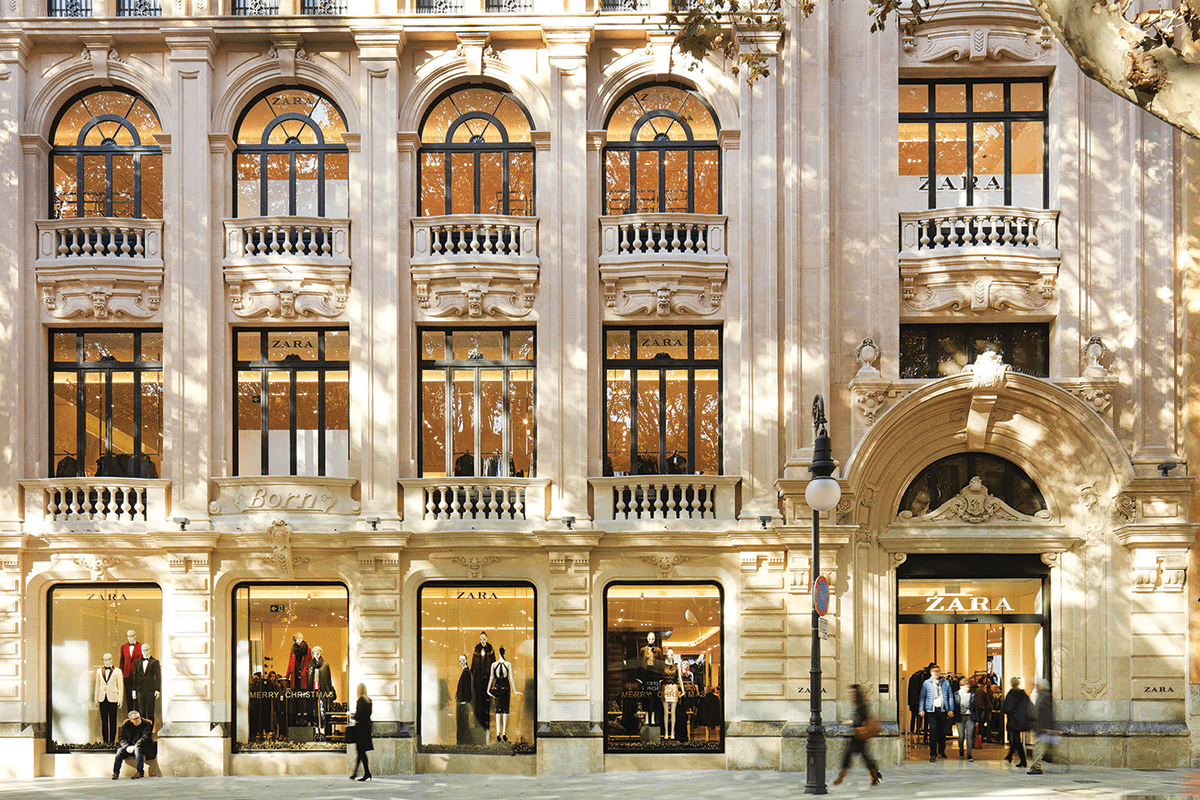Mobile now plays an integral role in all parts of the omnichannel shopping journey. Across in-store and online key changes are being wrought by mobile, writes Paul Skeldon.
1. Keep it simple
Anything any retailer does with mobile has to be simple. Pages should be simple: any processes that consumers have to follow to find what they want, or to buy things have to be quick and straightforward. Sign customers up in no more than three clicks, gathering the minimum of information as you do so. Anything more and they are gone.
2. Give them what they want
Part of this simplicity lies in making sure that what you offer via mobile is what the customers tell you they want. Don’t read this list and implement it, ask your customers. Budgens has reinvigorated the supermarket app by adding in a shopping list that adjust itself to take shoppers round the store in the right order. And this was prompted by customer feedback. See what customers want from your mobile offerings – app, website, Progressive Web Apps (PWAs) – check out how they use them and give them those things as simply as possible.
3. Make joining you worthwhile
Getting customers to ‘join’ you, whether as a member or subscriber, has many advantages for the retailer, not least the opportunity to see shoppers’ buying behaviour in great detail. But what is in it for the shoppers? Asos charge members a fee but give them free next-day delivery. It’s important to show customers how their lives become easier if they sign up – and even more so via the mobile app, where experiences can be so much better.
4. Visualisation
Augmented reality (AR) and virtual reality (VR) are no longer the stuff of science fiction, but technologies now hardwired into most modern smartphones – so make use of it. AR often requires no specialist equipment to work and can add a whole new layer to the in-store and online experience. In fact, research by ecommerce agency PushON found that almost half of shoppers would spend more online if they had access to technology that helped them to better visualise and understand how products work, without having to go in store to see them. Specifically, 40% of consumers would like to use Augmented Reality (AR) technology on mobile to test a product before they buy it, such as via an app that would allow them to place virtual images of products over a real-word view – this way, they can get a feel for how it will look in real life. That said, it works in store too: fashion retailer Zara’s new collection comes as an AR add on to the retailer’s app that will allow shoppers to see the clothes ‘come to life’ in the store on top models – who will even speak!
5. Marketplaces
Today anyone looking to create an omnichannel strategy has to work marketplaces into what they do. Like them or not, Amazon and eBay already attract about 40% of online retail traffic in the UK – they are where your customers are shopping. While marketplaces deliver customer numbers, there are also other reasons why they should also be part of the omnichannel mix. For starters, they are a good way to mobilise content, the marketplace doing the work both in terms of apps, PWAs and indeed good old-fashioned websites. There is also the added advantage that marketplaces can provide an ideal way to extend a retailer’s reach into other territories – especially if the retailer selects local ones. This can at a swoop overcome much of the grunt work of entering a new market: language, currency, logistics and returns.
6. Kill the checkout
Amazon Go – the automated, mobile-powered pilot shop in the US – has kickstarted something that retailers should have done long ago: get rid of queuing to pay. If you want t trend in retail to pin your hopes on in 2018, it’s going checkout-less. In the UK, the Co-op is trialling ‘shop, scan and go’ technology at its own store in its service centre in Manchester. ‘Big four’ – possibly soon to be part of the ‘Big three’ – grocery store Sainsbury’s is also working on a scan, pay and go app add-on, while Austrian electronics store MediaMarktSaturn, has also developed a scan and pay app at its flagship store in Innsbruck. The reality is, Amazon hit on the one thing we all hate about shops: queuing. The genius thing is that many retailers are realising that you don’t need billions of dollars investment in AI to make it happen – you can do it with some QR scanning, payments processing, an app and a bit of trust. And suddenly, the in-store experience is on the up.
7. Kill all queues
At least half of UK consumers have had an in-store experience ruined as a result of queuing in-store, with Londoners twice as likely to have had more than 10 bad experiences this year alone. So finds research conducted by Qudini, a SaaS customer experience management platform, which also suggests that making better use of mobile devices and social media could go some way to stopping this happening. So why not try and kill off queues altogether? Mobile Ticket enables retailers to significantly improve the in-store customer experience by enabling shoppers to use their mobile device to select a service and join a virtual queue, without needing to stand in a physical line, the company says. Customers open a web app, or scan a QR code if they prefer, and select the service they require, such as the collection of online orders in store, a meeting with an expert, personal or VIP shopping, and customer services. This eliminates the friction of waiting in line and maximises the opportunity to browse, increasing basket, customer satisfaction scores and brand loyalty. Job done.
8. Experiences
Aside from killing off the queuing nightmare that makes in-store a bit of a no-no for many people, especially the youngsters, shopping in-store and to some extent online needs to be an experience, rather than a chore. For some customers, the reality of in-store shopping can be frustrating when preferences and past experiences are not seamlessly connected, as they usually are with mobile-first brands. This, combined with cross-channel inconsistency and lack of personalised experience is just one reason why customers prefer to shop off the high-street. Retailers must abandon orthodox strategies to leverage the value of technology to deliver a unified shopping experience across the full spectrum of customer touchpoints. European fashion retailer, Mango is a prime example of the brand that is set to merge the two realities of the online world and physical retail, as part of the digital transformation programme. Shoppers visiting Mango’s store in Barcelona will soon be able to use fitting rooms featuring a digital mirror which will allow them to contact staff directly, request sizes, colours as well as pick the recommended items to complements the consumers’ original choice.
9. Social media
Social media has long been a bedrock of m-commerce,with Twitter, Facebook and Instagram having long been primarily used on mobile. The power they wield, carrying recommendations and user-generated marketing content, mustn’t be underestimated. Visual content shared via social media on mobile produces as much as a 111% uplift in conversion and can generate a 180% boost in revenue per visitor to a website, according to a study by Bazaarvoice. Almost 60% of its clients say that customer pictures and video content are now standard in ecommerce, and 81% say that integrating social media and online shopping is a priority for their business. Shoppers themselves are embracing it too. More than two thirds of UK consumers go on to purchase products they discover on retailer’s social media channels, a study of 1,000 consumers aged between 18 and 65 by marketing technology company Curalate found. It also found that 46% spend time thinking about it then buy later online, while 17% will buy in-store. A small but significant 4% make the purchase immediately online after seeing the product. Overall, 39% of consumers were influenced by user-generated content, saying real-life images of people who had previously bought the product would make them more likely to make a purchase. Instagram is particularly lively in this space, tweaking its tools to make it easier for retailers to sell from their Instagram feeds – marking a move towards social media sites also becoming quasi-marketplaces.
10. Distributed retail
Taken together, the rise of marketplaces and the move by Instagram to drive sales from its platform marks a move towards a new paradigm in retailing. The model of distributed retail is something that has long been touted, but increasingly it is becoming something that all retailers need to be aware of. Trials by eBay to let publishers Mashable and Time Inc sell things, via eBay, from their pages marks the start of this move. Combine that with Instagram’s shoppable posts – and in some ways work in the ‘scan, pay, go’ moves in-store, and suddenly the mobile phone is a direct connection to seeing something and buying it. What does this mean for retailers? Suddenly, they are just supplying goods to eBay, Instagram and whoever else gets in on this to make the sale. Moves by Google to turn its search results into sales don’t help either. Sick of passing on searchers to Amazon, Google is looking to make its results shoppable too. Suddenly, this changes very much how people shop and that changes how retailers act. Having a mobile-optimised website isn’t enough, even a ‘traditional’ omnichannel approach isn’t either: now you have to look at a myriad of new platforms to sell through.
11. Voice
There is another new channel to add to the multitude of channels in multichannel retail: voice. A fifth of US shoppers have made a purchase with a voice-controlled personal device, such as a Google Home, Amazon’s Echo and Alexa, or, if they have deep pockets, Apple’s Siri-enabled HomePod this year, according to research by Walker Sand. This number rises to 43% amongst millennials. Investment firm Mizuho, goes further, predicting that revenue generated by the Amazon Echo and Amazon Alexa services could exceed £8.37bn ($11bn) by 2020. The firm also predicts that £3.04bn ($4bn) of that would come from the sales of the Echo device itself (including the Tap and Dot), while the other £5.33bn ($7bn) would come from all the commerce transactions derived from those devices to Amazon.com.
This has serious implications for retail. Not only are shoppers wanting these devices in their home to help them do all manner of things from play music to finding recipes to shopping, but they are also starting to expect retail apps and retail websites – especially on mobile – to also be voice-controlled. Some of the forward-thinking retailers are already starting to exploit these home devices, but for the majority who are still struggling to deliver a good mobile user experience, it is simply seen as a bridge too far. But they ignore voice at their peril. Voice is calling, and retailers need to answer.
12. Get personal, not discount
Mobile and voice commerce both offers the chance to create a deep and personal connection with retailers and drive sales by forming a relationship with them. However, marketers still aren’t getting personalisation right – with most not matching what they do with the personalisation consumers want and most not delivering the level of customer service they crave, new research has revealed. According to Epsilon’s new report The Power of me: The impact of personalisation on marketing performance, there is a disconnect between marketers and consumers, with brands failing to understand what their customers want from personalisation. The personalised experiences most wanted by consumers are customisation and service, with a third of consumers (32%) wanting brands to suit something exactly to them and their needs, and another third (32%) considering service, a company knowing their likes and dislikes, as the most important aspect of personalisation. However, this does not correlate with the personalised experiences most commonly offered by brands. Brands aren’t focusing on customisation and service but are instead providing consumers with discounts and rewards programmes (31%) or simple recommendations based on previous purchases (22%). In fact, both of these factors are considered far less important by consumers (16% and 8% respectively). Time to get personal, time to use as many platforms as you can and time to wake up the changing face of retail.







